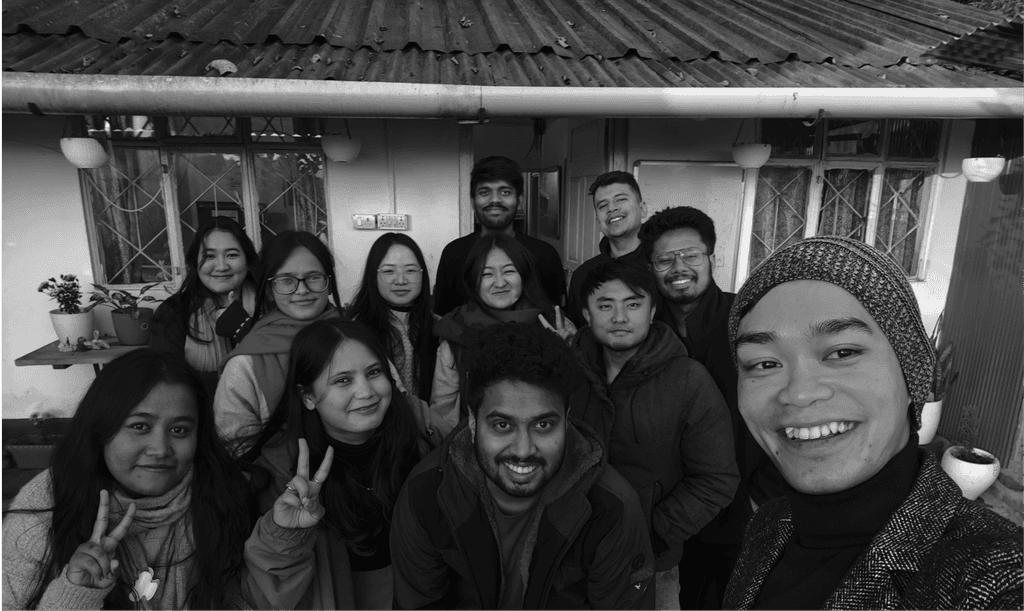Bengali
The Desert’s Alchemy #LocalSolution

Proteeti Satpati
Feb 22, 2025

The Desert’s Alchemy
#LocalSolution
Long before industrial salt refineries cropped up to dominate supply chains globally, the indigenous communities across their arid landscapes had already mastered the art of extracting salt, not from seawater, but from the soil beneath their feet. In the Kutch region of Gujarat, the Agariyas—a marginalized community—are master practitioners of a soil-based salt harvesting technique that represents a conscious mix of environmental understanding, indigenous engineering, and economic resilience. Here we explore how these people, armed with a traditional knowledge system, turned salinity into a lifeline, and did so through methods that were frugal, sustainable, and deeply rooted in the workings of nature.
The Rann of Kutch: A Landscape of Extremes
The Rann of Kutch is a salt marsh in western India characterized by one of the most unique ecosystems in the subcontinent. For the greater portion of the year, it is a barren, blinding-white desert, continuously exposed to the sun’s scorching rays, but the monsoons here are a different story. The rains transform this place into a shallow lake, fed by seasonal rivers and underground saline aquifers. This annual ritual of flooding and evaporation leaves behind a salt-rich crust ripe for harvesting. It is this mineral-laden earth, not the sea, that has provided the Agariyas with livelihood for centuries.
The Agariyas
The Agariyas, as their name suggests, are traditional salt farmers of the Rann. Their name derives from the word “agar,” meaning “field” where salt is crystallized. For generations, these families have migrated to the salt plains after the rains retreat and lived there for eight continuous months, isolated from villages, amenities, and formal infrastructure. Despite their seasonal isolation, they possess remarkable knowledge of geology, crystallography, and hydrology. They have an intuitive grasp over complex salt-harvesting stages such as the depth at which brine can be found, the ideal temperature and wind conditions for crystallization, evaporation pan designs that minimize contamination and maximise yield, and so on. Their unconventional method of salt extraction, therefore, deserves some explaining.
A Different Model of Salt Extraction
India does have a long coastline that produces sea salt in abundance, but Kutch’s salt a welcome exception. Here the saline water does not come from oceans but from ancient geological formations beneath the Rann which formed millions of years ago when geological activity led to the recession of the Arabian Sea. This soil-based harvesting technique involves identifying brine-rich zones through observation and ancestral mapping, digging and maintaining bores manually, constructing salt pans, regulating flow and evaporation through sluice gates and daily adjustments, and finally, manual harvesting using long wooden rakes and drying platforms.
As can be gauged, this process is physically taxing and requires a sharp eye for timing. Moreover, it is entirely weather-dependent—something like a sudden storm can upend months of hard work. Yet, the salt produced is one of the finest and purest, capable of commanding good markets and prices if it can reach buyers. However, most Agariyas are ignorant of the vast possibilities and still earn minimal returns due to lack of consumer knowledge and profit-capturing by middlemen.
What makes their knowledge system so extraordinary is how it seamlessly adapts natural forces into productive tools to aid in production of salt. The Agariyas use various environmental cues to ensure proper harvesting. They use wind patterns to guide evaporation, consider the colour of brine to determine purity—deep green means rich mineral content, reddish indicates iron presence—use solar intensity and moon cycles to guide production, and use cow-dung and clay as natural filters and soil binders in pan construction. Their work may appear rustic and untrained, but naturally mirror the scientific principles of passive solar distillation, hydraulic engineering, and environmental engineering.
Lives in Limbo
The Agariyas are responsible for producing over 75% of Gujarat’s salt. However, despite their deep knowledge and indispensable contribution, they live rather precarious lives. For decades, they have been treated as encroachers on government land and denied basic services like electricity, schooling, and basic healthcare. Their children often must drop out of school owing to their migratory lifestyle, with little initiative from the authorities to bring them back to school. They are also susceptible to health risks—continued exposure to salt and sun leads to skin, eye, and respiratory diseases. They are also forced to work under exploitative systems with little bargaining powers because most of them work on lands they do not own, and produce salt over which they have no claim. To make matters worse, their methods are not “formally recognized” by modern industries, meaning that their indigenous expertise remains undocumented, undervalued, and runs the risk of extinction.
Revival and Recognition
In recent years, however, NGOs like the Agariya Heet Rakshak Manch and scholars from institutions like the Indian Institute of Management, Ahmedabad, have started documenting and preserving their knowledge. These institutions have also started advocating for the basic rights that the Agariyas have long been denied.
The Agariya community has from within itself birthed new innovations such as replacing diesel generators with solar pumps, cutting down on costs and emissions, the establishment of collective marketing platforms to bypass middlemen, and training programmes to integrate traditional methods with scientific validation. Some Agariyas are even registering their salt as a GI (Geographical Indication) product, reclaiming pride and ownership over their ancestral craft.
From Margins to Models
Under an unforgiving sun, an invisible workforce toils away in the cracked terrain of Kutch, extracting white gold using nothing but generational wisdom, muscle, and hope. They are more than salt harvesters—they are scientists equipped with environmental knowledge and unparalleled intuition. To bring their knowledge into the light is to redefine the meanings of expertise, sustainability, and development— topics increasingly relevant in today’s climate-stressed world with increasing issues of water scarcity and soil salinity. Their craft provides alternative models for resource management, decentralized livelihoods, and equitable economies. Perhaps it is time we tasted their salt, not just on our tongues, but in our policies, textbooks, and imagination.

